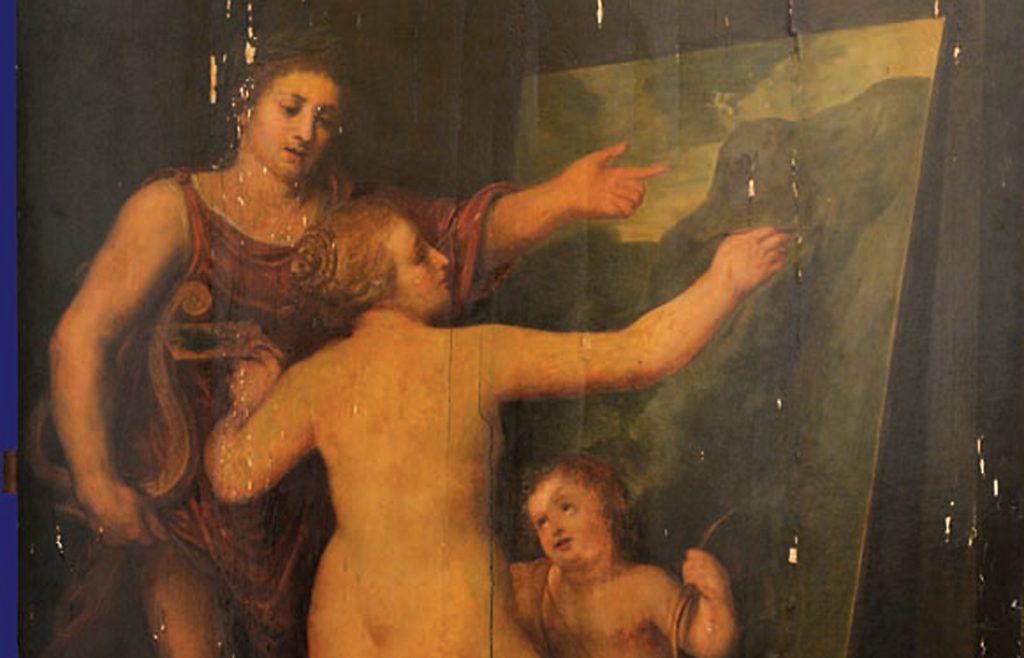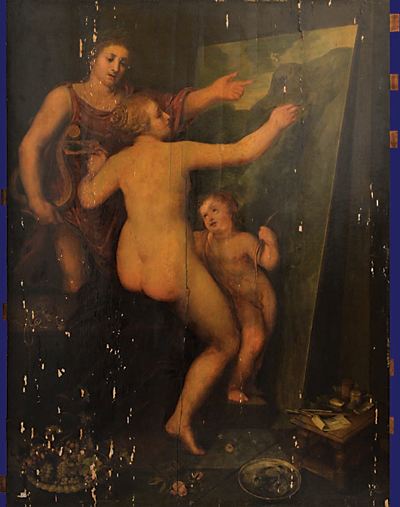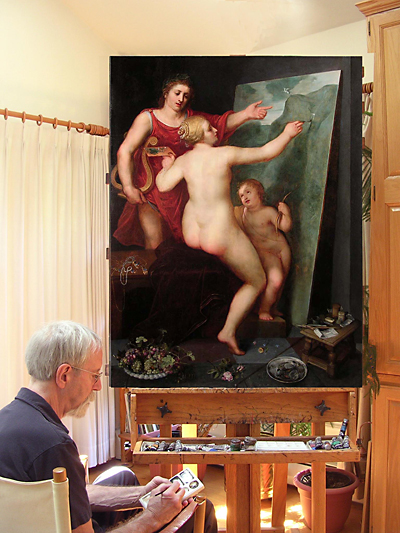
According to painting conservator Barry Bauman, every painting has a secret. And over his 46-year career, he has revealed many of them—including lost signatures, hidden dates, even entire paintings underneath another one. He has also been able to determine if a painting is a fake, and, in some cases, to correctly identify its original artist, owner, or history.
On Saturday, October 26, at 1 p.m., Bauman will present “A Triple Discovery: Hoyt Sherman Place’s Apollo and Venus,” an hour-long presentation about the research procedures that uncovered the secrets behind this historic painting. (It’s a story so remarkable that it landed in The New York Times.) The talk will be held in the Hoyt Sherman Place Theater, 1501 Woodland Ave., in Des Moines, followed by a viewing of the painting on permanent display in the Art Gallery. This event is free and open to the public. For anyone who’s a fan of Antiques Roadshow, this is a presentation for you.

The story behind this painting begins with another important discovery—one made by Hoyt Sherman Place Executive Director Robert Warren. He was searching for some Civil War flags when a staff member recalled noticing collection materials in a little-used storeroom beneath the theater’s second floor balcony. There, Robert caught sight of a painting wedged between a table and the wall, one that had been lost and unknown to the staff for decades. Robert was not sure what he had found, nor that his discovery would lead to the early Baroque origins (ca. 1600) of a painting we now know as the Apollo and Venus by Otto van Veen.

Barry Bauman’s career began at the Art Institute of Chicago, where he worked for eleven years before departing as the associate conservator of paintings. Next, he founded and directed the Chicago Conservation Center, which, over the next 20 years became the nation’s largest conservation facility. In 2004, Bauman left the private sector to establish Bauman Conservation, America’s first national conservation laboratory offering complimentary conservation services to museums and nonprofits. When he closed Bauman Conservation in 2018, it was estimated that Barry Bauman had contributed more than $6,000,000 in conservation services to museums and nonprofits.
“The conservation of paintings can sometimes be a subject of drama,” he says, “and each artwork in need of restoration carries within it, like a Chinese box, layer upon layer of meaning—sometimes obscured, puzzling, or distorted.”
